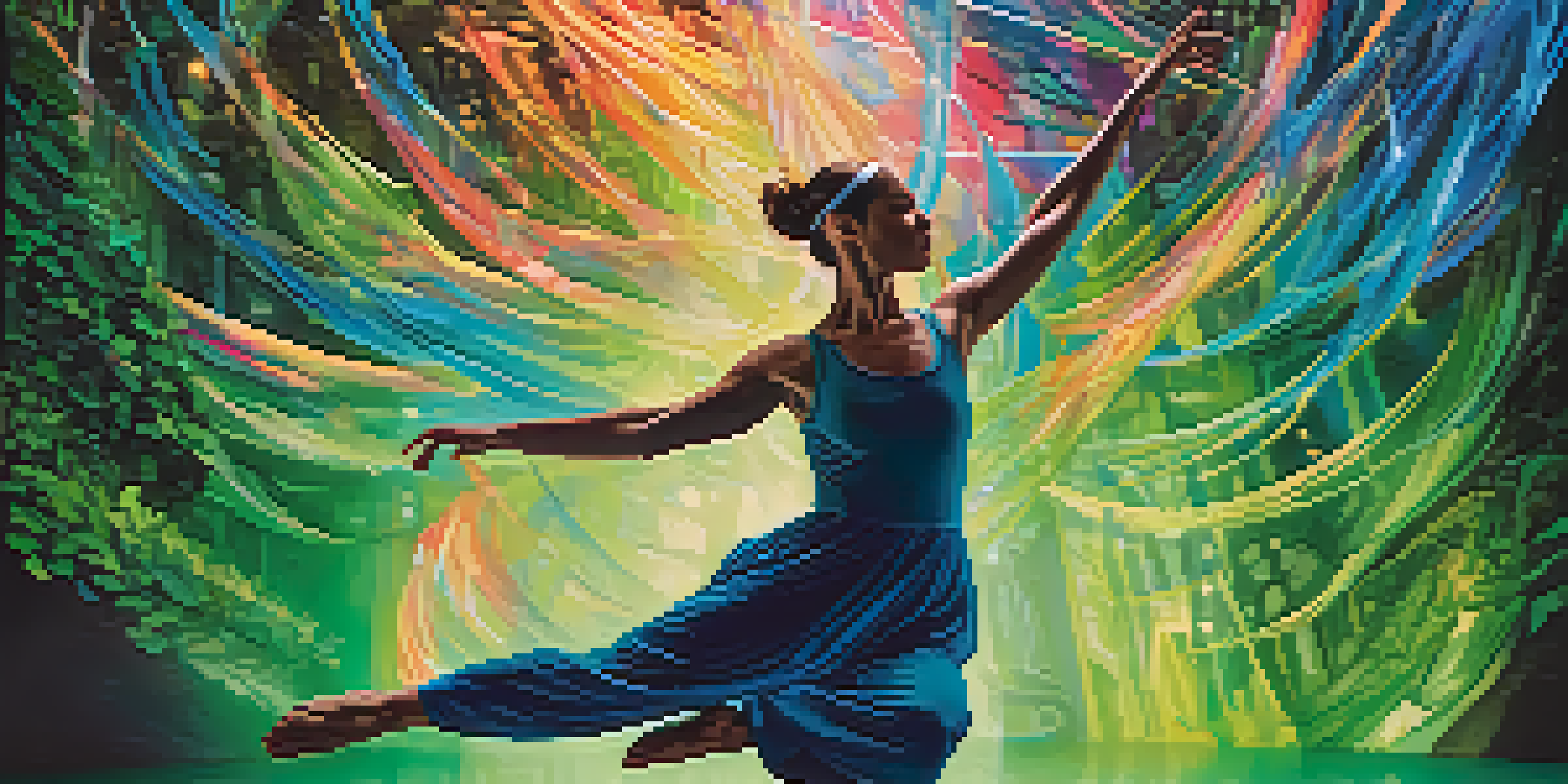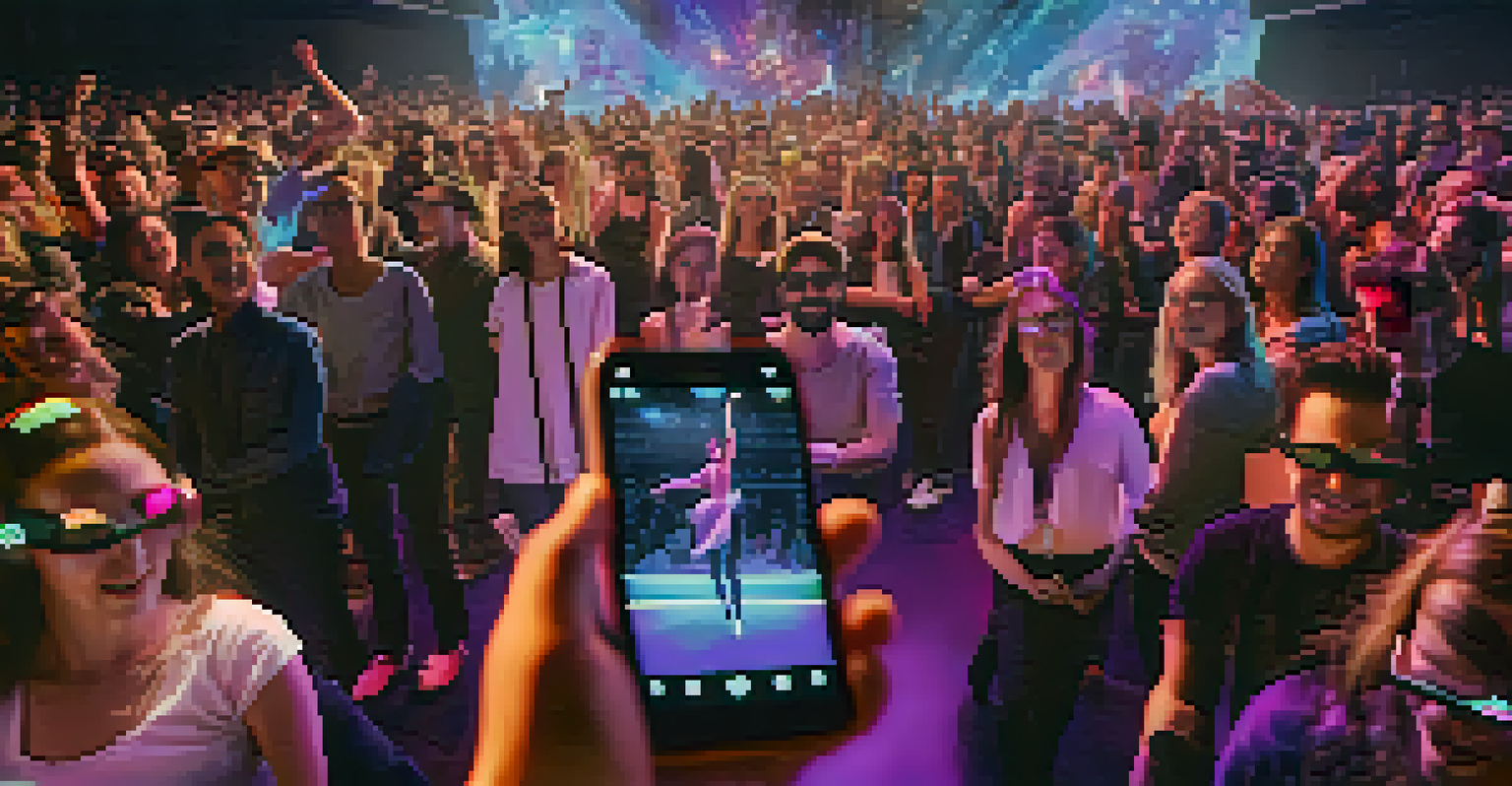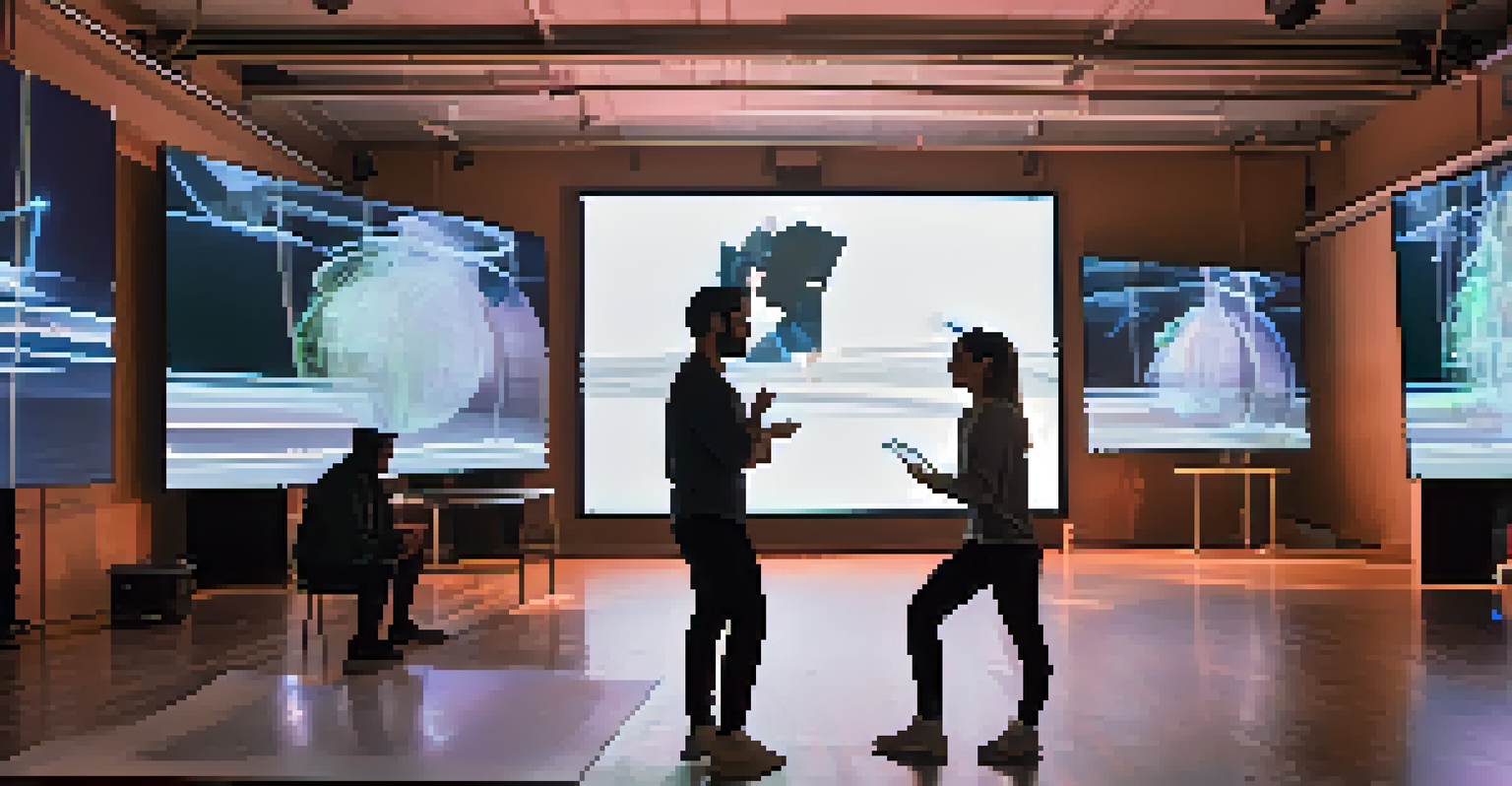Augmented Reality in Dance: Enhancing Live Performances

Understanding Augmented Reality in Dance
Augmented Reality (AR) is a technology that overlays digital content onto the real world. In the context of dance, this means that performers can interact with virtual elements, creating an immersive experience for the audience. Imagine a dancer moving gracefully while vibrant graphics swirl around them, enhancing their movements and telling a story.
Technology is best when it brings people together.
This integration of AR allows choreographers to push boundaries by blending physical dance with digital art. It opens up a world of possibilities, where the stage becomes a canvas for creativity. By incorporating AR, artists can engage viewers in ways traditional performances often cannot.
As AR technology continues to evolve, its applications in dance are becoming more sophisticated. Performers can now utilize motion capture and real-time graphics, making their routines more dynamic. This not only captivates audiences but also redefines the relationship between the dancer and their environment.
Enhancing Storytelling Through AR
One of the most exciting aspects of incorporating AR into dance is the enhanced storytelling it enables. Traditional dance often relies on the physicality of movement to convey emotions and narratives. However, with AR, dancers can express complex stories through visual elements that accompany their performances.

For example, a ballet performance might use AR to depict a magical forest, where the dancers interact with animated creatures or changing scenery. This not only enriches the narrative but also allows audiences to experience the story in a more profound way. It creates a multi-sensory experience that can resonate deeply with viewers.
AR Enhances Dance Storytelling
Augmented Reality allows dancers to express complex narratives through visual elements, enriching the overall storytelling experience.
Moreover, AR can also help to bridge cultural gaps by providing context and background to performances. Dancers can illustrate historical events or cultural tales through augmented visuals, making the art form more accessible to diverse audiences. This blending of technology and tradition fosters a deeper appreciation for the art of dance.
Creating Immersive Audience Experiences
AR isn't just a tool for performers; it significantly enhances the audience's experience too. Imagine watching a dance performance where the audience can use their smartphones or AR glasses to see additional layers of content. This interactive experience allows viewers to engage with the show on a personal level, making them feel like part of the performance.
Art is the most beautiful of all lies.
Some companies have already started experimenting with this concept, allowing audience members to choose different perspectives or access behind-the-scenes content during the show. This level of interactivity can transform a traditional performance into a shared adventure, keeping everyone on the edge of their seats.
By incorporating AR, dance companies can also gather valuable feedback from audiences. Data on how viewers interact with the augmented elements can help refine future performances, ensuring that each show is better than the last. This feedback loop fosters innovation and keeps the art form fresh and exciting.
Overcoming Technical Challenges in AR Dance
While the potential of AR in dance is enormous, it doesn't come without its challenges. One major hurdle is ensuring that the technology works seamlessly in a live performance setting. Technical glitches can disrupt the flow of a show, which can be particularly detrimental in a medium that relies heavily on timing and precision.
Another challenge is the need for extensive planning and rehearsal. Dancers must practice not only their choreography but also how to interact with digital elements. This additional layer of complexity can be daunting, but it can also lead to innovative and thrilling performances when executed correctly.
Immersive Audience Engagement
AR transforms the audience experience by enabling interactive participation, making viewers feel like integral parts of the performance.
Despite these challenges, many artists are embracing AR as a way to evolve their craft. By investing time in training and technology, they are paving the way for future generations of performers. The commitment to overcoming these obstacles reflects the dance community's dedication to innovation and creativity.
Collaboration Between Artists and Tech Developers
To successfully integrate AR in dance, collaboration between artists and technology developers is essential. Dancers bring their artistic vision, while tech developers provide the tools and expertise needed to bring that vision to life. This partnership can lead to groundbreaking performances that wouldn't be possible without a shared understanding of both art and technology.
For instance, choreographers might work closely with programmers to design custom AR experiences that align perfectly with their movements. This collaborative approach ensures that the digital elements enhance rather than distract from the performance. When both parties communicate effectively, the result can be truly magical.
Additionally, these collaborations can inspire new forms of dance that incorporate technology in innovative ways. As artists and developers continue to explore this intersection, we can expect to see more unique performances that challenge our perceptions of what dance can be.
The Future of AR in Dance
As AR technology continues to advance, its potential in the world of dance is limitless. We can anticipate more sophisticated applications, such as integrating artificial intelligence to create adaptive performances that respond to audience reactions in real-time. This could revolutionize live entertainment as we know it.
Moreover, as AR becomes more accessible, we may see a rise in virtual performances that reach global audiences. Dancers could perform from anywhere in the world, while viewers participate from their own homes, breaking down geographical barriers. This democratization of dance could lead to a wider appreciation of the art form.
Collaboration Fuels Innovation
Successful integration of AR in dance relies on collaboration between artists and tech developers, leading to groundbreaking performances.
Ultimately, the future of AR in dance holds the promise of a richer, more inclusive experience for both performers and audiences. As artists continue to experiment with these technologies, we can expect to see exciting, boundary-pushing performances that challenge our understanding of dance.
Conclusion: The New Era of Dance Performance
In conclusion, augmented reality is transforming the landscape of live dance performances. By enhancing storytelling, creating immersive experiences, and fostering collaboration, AR is paving the way for a new era in the world of dance. It's an exciting time for artists and audiences alike, as the fusion of technology and art continues to evolve.
As we look forward to the future, we can only imagine the incredible performances that await us. The potential for creativity is boundless, and the dance community is poised to embrace these changes wholeheartedly. With AR at their disposal, dancers can create experiences that resonate on a deeper level with audiences.

In this new chapter of dance, the stage is set for innovation and expression. As artists continue to explore the possibilities of augmented reality, we can expect to witness performances that not only entertain but also inspire and connect us all.